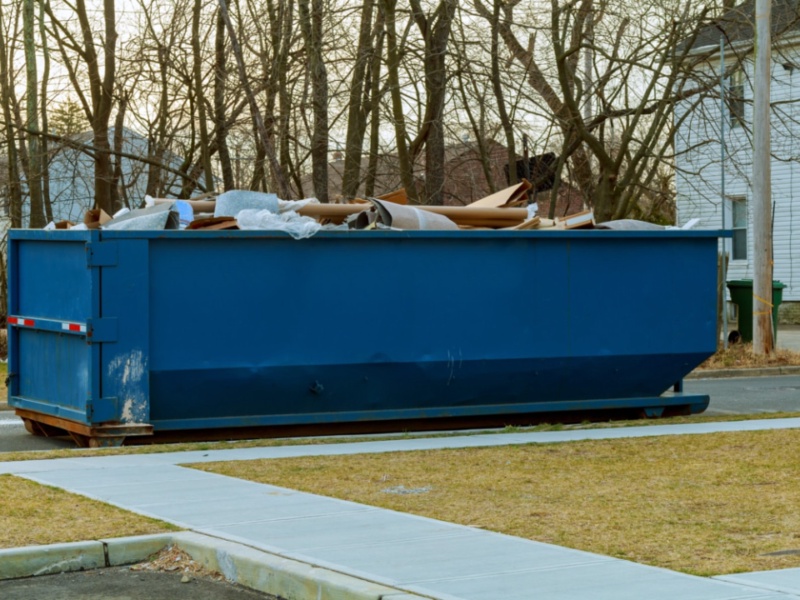When it comes to tackling a roof tear-off project, one of the most important considerations is selecting the right rolloff dumpster size. The size of a dumpster can directly impact the efficiency and cost-effectiveness of a roofing project. In today's blog, we'll explore factors you should consider when choosing the right-sized dumpster for your roof debris.
How Roofing Material Effects a Dumpster Roll-Off Size
Before delving into dumpster sizes, it's crucial to have a basic understanding of the roof tear-off process. A roof tear-off involves removing the existing roofing materials down to the deck, which typically includes:
- Shingles
- Underlayment
- Plywood
The weight and volume of the removed materials play a significant role in determining the required dumpster size.
Considerations for Dumpster Sizes
Dumpsters for roof tear-offs are commonly measured in yards. Most dumpster sizes range from 10-, 20-, and 30-yards. Here are some considerations to help you choose the correct size:
- Square Footage of the Roofing Area
- Weight of Roofing Material
- Number of Roofing Layers
- Access and Space Constraints
Roof Area
As an industry standard, within roofing, shingles are bundled together in packs of three. One pack of shingles is commonly packaged with 15 to 29 shingles, which commonly cover 100 square feet (sf) on a roof or one roofing square.
Material Weight
Shingles can come in all shapes and sizes: asphalt, tile, copper, and slate. That can vary the weight of shingles greatly. For example:
- 3-tab asphalt or architectural composite shingles can weigh 50 to 80 pounds (lbs).
- Tile, copper, and slate can weigh as much as 300 lbs per bundle.
Then, there's the weight for the underlayment and plywood, which needs to be accounted for as well.
Number of Layers
If your roof has multiple shingle layers, you'll need additional capacity in a dumpster rolloff to accommodate the extra debris. The underlayment to cover 10 sf can weigh between 25 to 130 lbs.
Lastly, the plywood layer can also vary by weight. A standard 4x8-foot plywood board weighs around 70 lbs per board. If the layer being removed is constructed of an Oriented Strand Board or OSB, the weight jumps to 80 lbs per board.
Access and Space Constraints
It's essential to consider the available space on your property before the dumpster is delivered. Ensuring there is ample room for the dumpster at the work site and that the workers have easy access to the dumpster from the roof will make you feel prepared and proactive in managing your project.
Weight and Volume for Rolloff Dumpsters
When determining an appropriate dumpster size, it's important to estimate the weight and volume of the roofing material being removed. As discussed above, factors such as the number of layers, type of shingles, and the roof area size will significantly impact these calculations.
Being aware of the dumpster's weight limitations and adhering to local regulations will keep you informed and in control of project requirements while remaining within budget. To give you a better understanding of weight capacity per yard, here are the volume capacities and weight limits for three different-sized dumpsters:
- 10-yard holds 4,000 to 6,000 lbs
- 20-yard: 6,000 lbs
- 30-yard: 7,000 to 10,000 lbs
Consult With A Professional Rolloff Service Provider
If you're uncertain about the appropriate dumpster size, it is always wise to seek the advice of the professionals at Big John's Rolloff Service at 417-540-0663. Their extensive experience in working with roofing professionals can offer invaluable guidance tailored to the specifics of your roofing project, instilling confidence in your decision-making process.
